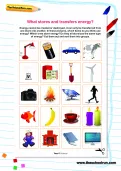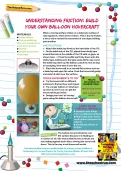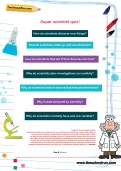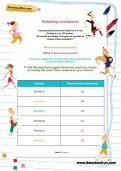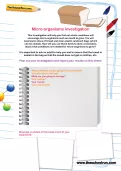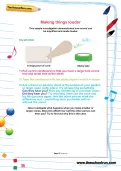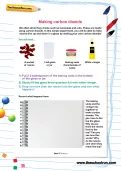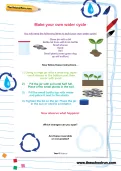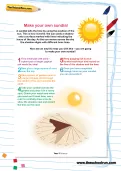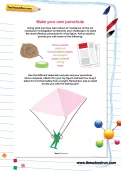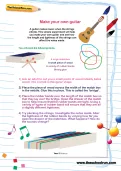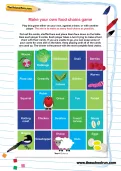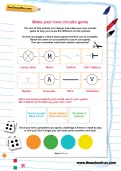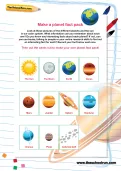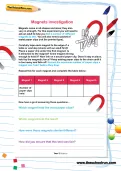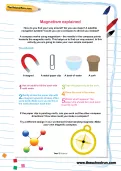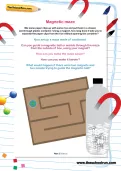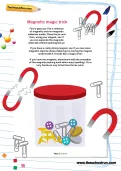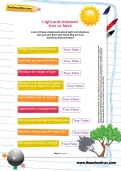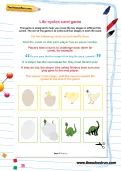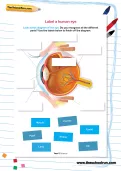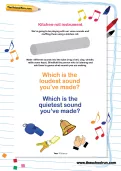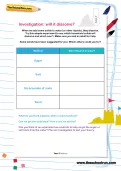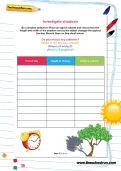Ks2 Science worksheets
Free worksheets: Science, KS2, Y6
You’ll need to login or Register first to access these worksheets for free.
Once you’ve tried out our free worksheets, why not explore all our resources (1000s of worksheets, interactive tutorials, learning packs and more) with a 14-day FREE trial subscription.
What stores and transfers energy?
Energy cannot be created or destroyed, it can only be transferred from one store into another. In these pictures, which items do you think use energy? Which ones store energy? Do they all store/use the same type of energy? Cut them out and sort them into groups.
Understanding friction: Build your own balloon hovercraft
When a moving surface slides on a stationary surface it rubs against it, which slows it down. This is due to friction, a force which resists the movement of one object sliding past another. Understand more about friction with a fantastic practical project: make your own balloon hovercraft!
Super scientist quiz
Quiz questions to encourage your child to think about how scientists work and why they do the things they do.
Reaching conclusions
A worksheet showing results of an experiment with questions underneath to consider.
Micro-organisms investigation
This investigation will help you find out which conditions will encourage micro-organisms such as mould to grow.
Making things louder
This simple investigation demonstrates how sound can be amplified and made louder.
Making carbon dioxide
We often drink fizzy drinks such as lemonade and cola. These are made using carbon dioxide. In this simple experiment, you will be able to make raisins dive up and down in a glass by making your own carbon dioxide!
Make your own water cycle
Build your own water cycle and investigate reversible and irreversible changes.
Make your own sundial
A sundial tells the time by using the position of the sun. This is how it works: the sun casts a shadow onto a surface marked with lines indicating the hours of the day. As the sun moves across the sky
the shadow aligns with different hour-lines. Do you think you can make your own sundial?
the shadow aligns with different hour-lines. Do you think you can make your own sundial?
Make your own parachute
Using what you have learned about air resistance, your challenge is to make the most effective parachute for a toy figure.
Make your own guitar
A guitar makes music when the strings vibrate. This simple experiment will help you make your own guitar and see how the length and tightness of the strings can affect the notes made.
Make your own food chains game
The aim of this game is to make as many food chains as possible.
Make your own circuits game
The aim of this activity is to design and make your own circuits game to help you revise the different circuit symbols.
Make a planet fact pack
Look at these pictures of the different planets and the sun in our solar system. What information can you remember about each one? Do you know any interesting facts about each planet? If not, can you use books, talking to people or your online research skills to find out an interesting fact for each? Record your fact below each one.
Magnets investigation
Magnets come in all shapes and sizes; they also vary in strength. This experiment will test the magnetic force of a variety of different magnets.
Magnetism explained
How do you find your way around? Do you use maps? A satellite navigation system? Could you use a compass to direct you instead? A compass works using magnetism – the needle in the compass points
towards the magnetic north. This helps us to find our way around. In this activity you are going to make your own simple compass!
towards the magnetic north. This helps us to find our way around. In this activity you are going to make your own simple compass!
Magnetic maze
Mix some paper clips up with some rice and put them in a closed, see-through plastic container. Using a magnet, how long does it take you to separate the paper clips from the rice without opening the container? Now set up a maze made of cardboard. Can you guide a magnetic ball or marble through the maze from the outside of box, using your magnet?
Magnetic magic trick
Find a glass jar. Put a selection of magnetic and non-magnetic materials inside. Close the jar and then, using your magnet, see if you can separate the magnetic materials without opening the jar.
Light and shadows true or false
Look at these statements about light and shadows. Can you sort them into those that are true and those that are false?
Life cycles card game
This game is designed to help you revise the key stages in different life cycles. The aim of the game is to collect all four stages in each life cycle.
Label a human eye
Look at this diagram of the eye. Do you recognise all the different parts? Use the labels below to finish off the diagram.
Kitchen-roll instrument
We’re going to be playing with our voice sounds and muffling them using a kitchen roll. Make different sounds into the tube (ring a bell, clap, whistle, rattle some keys). Blindfold the person who is listening and ask them to guess what sounds you are making.
Investigation: will it dissolve?
When we add some solids to water (or other liquids), they dissolve. Try this simple experiment to see which household solids will dissolve and which won’t.
Investigate shadows
Be a shadow detective! Place an object outside and record how the height and width of the shadow cast by the object changes throughout the day. Record them on this sheet.
